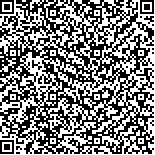| 张思维,郑荣寿,孙可欣,等.2016年中国恶性肿瘤分地区发病和死亡估计:基于人群的肿瘤登记数据分析[J].中国肿瘤,2023,32(5):321-332. |
| 2016年中国恶性肿瘤分地区发病和死亡估计:基于人群的肿瘤登记数据分析 |
| Estimation of Cancer Incidence and Mortality in Different Geographic Areas of China in 2016: Analysis Based on Population-based Cancer Registry Data |
| 投稿时间:2023-04-03 |
| DOI:10.11735/j.issn.1004-0242.2023.05.A001 |
|
 |
| 中文关键词: 肿瘤登记 发病率 死亡率 地区差异 中国 |
| 英文关键词:cancer registry incidence mortality geographical disparity China |
| 基金项目:中国医学科学院医学与健康科技创新工程(2021-I2M-1-046) |
|
| 摘要点击次数: 2712 |
| 全文下载次数: 413 |
| 中文摘要: |
| 摘 要:[目的] 描述我国东、中、西部不同地区恶性肿瘤发病和死亡情况。[方法] 利用国家癌症中心收集的全国各肿瘤登记处提交的《2019中国肿瘤登记年报》数据,根据肿瘤登记数据的完整性、有效性和可比性进行质量评价,选取质量合格的登记处作为全国肿瘤登记地区样本数据,利用全国人口数据估计2016年各癌症分地区、性别、年龄组发病和死亡人数以及发病率和死亡率。[结果] 纳入分析的487个登记处中,东部地区为156个,覆盖人口数为1.81亿,占2016年年末东部地区人口数的34.74%,中部地区登记处为148个,覆盖人口数为1.02亿,2016年年末占中部地区人口数的21.95%,西部地区登记处为183个,覆盖人口数为0.99亿,占2016年年末西部地区人口数的24.85%。估计我国东部地区恶性肿瘤新发病例数为166.78万例,发病率为320.94/10万,中部地区恶性肿瘤发病例数为133.10万例,发病率为286.69/10万,西部地区恶性肿瘤发病例数为106.52万例,发病率为267.11/10万。东、中、西部地区年龄别发病率变化大致相同。我国东部地区恶性肿瘤发病前5位的为肺癌、结直肠癌、胃癌、女性乳腺癌和肝癌,男性第1位为肺癌,女性第1位的为乳腺癌。中部地区前5位的为肺癌、胃癌、肝癌、结直肠癌和女性乳腺癌,男性和女性第1位的分别为肺癌和乳腺癌。西部地区前5位的为肺癌、肝癌、结直肠癌、胃癌和食管癌,男性和女性第1位恶性肿瘤均为肺癌。东、中、西部地区的恶性肿瘤死亡病例数分别为95.34万例、80.67万例和65.35万例,死亡率分别为183.47/10万、173.75/10万和163.87/10万。各地区恶性肿瘤年龄别死亡率趋势相似。无论东、中、西部地区恶性肿瘤死亡前5位的都是肺癌、肝癌、胃癌、食管癌和结直肠癌。[结论] 我国不同地区恶性肿瘤发病和死亡存在不同,应根据各地区不同的特点制定不同的重点癌症防治策略。 |
| 英文摘要: |
| Abstract: [Purpose] To estimate the cancer incidence and mortality in the different areas of China in 2016.[Methods] The data of 2019 China Cancer Registry Annual Report submitted by cancer registries across the country were used, and the completeness, validity and comparability of the data were evaluated. Qualified cancer registry data were pooled for analysis. The national population data of 2016 were used to estimate the incidence and mortality of cancer by age, gender, area and cancer site. [Results] Among 487 cancer registries 156, 148 and 183 registries were located in eastern, central and western areas, covering 181 million, 102 million and 99 million people and accounting for 34.74%, 21.59% and 24.85% of total population, respectively. For estimation, 1.668 million new cancer cases were diagnosed in eastern areas with a crude incidence rate of 320.94/105; 1.331 million new cancer cases were diagnosed in central areas with a crude incidence rate of 286.69/105; 1.065 million new cancer cases were diagnosed in western areas with a crude incidence rate of 267.11/105. The age-specific incidence rates were similar across areas. The top 5 common cancers in eastern areas were lung cancer, colorectal cancer, gastric cancer, female breast cancer and liver cancer, with lung cancer and female breast cancer as the most common cancers in male and female, respectively. The top 5 common cancers in central areas were lung cancer, gastric cancer, liver cancer, colorectal cancer and female breast cancer, with lung cancer and female breast cancer as the most common cancers in male and female, respectively. The top 5 common cancers in western areas were lung cancer, liver cancer, colorectal cancer, gastric cancer and esophageal cancer, with lung cancer as the most common cancer in both male and female. A total of 0.953, 0.807 and 0.654 million cancer deaths were estimated in eastern, central and western areas, with crude mortality rates of 183.47/105, 173.75/105 and 163.87/105,respectively. The age-specific mortality rates were similar across areas. The top 5 common causes of cancer deaths were lung cancer, liver cancer, gastric cancer, esophageal cancer and colorectal cancer in all areas. [Conclusion] The cancer incidence and mortality differ by geographic areas in China. Targeted cancer prevention and control policies should be developed according to the epidemiological features of cancers in each area. |
|
在线阅读
查看全文 查看/发表评论 下载PDF阅读器 |